Visit Istria guide will introduce you to this magnificent Croatian peninsula. Furthermore, you will find out why you should visit it, where to stay, and which places to see, together with helpful tips. So stay with us.
Hum is the world’s smallest town. In addition, they make one of the best Gin there.
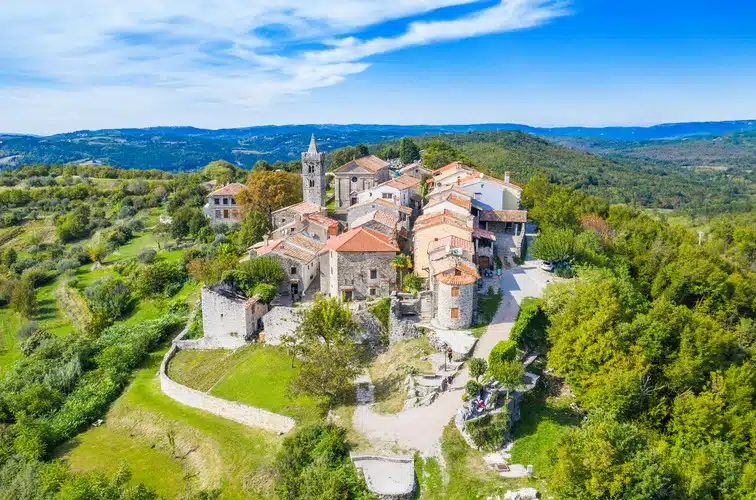
©valamar-experience.com
Why Visit Istria?
Because continental Croatia meets the Adriatic there, 3300 sq-km peninsulae in the northwest country. Furthermore, the rural interior of rolling hills and fertile plains attracts gourmet visitors. At the same time, the coastline is enormously popular with the sun-and-sea set. Though vast hotel complexes line much of the coast, the rocky beaches are not Croatia’s finest. But facilities are wide-ranging, and the clean sea and secluded spots are still plentiful.
Istria’s famous coast gets flooded with central European tourists in summer. Nevertheless, you can feel alone and undisturbed in the peninsula’s inland. Add acclaimed gastronomy (fresh seafood, prime white truffles, wild asparagus, top-rated olive oils, and award-winning wines), sprinkle it with historical charm, and you have a little slice of heaven.
Visit Istria isn’t perfect without visiting Rovinj.
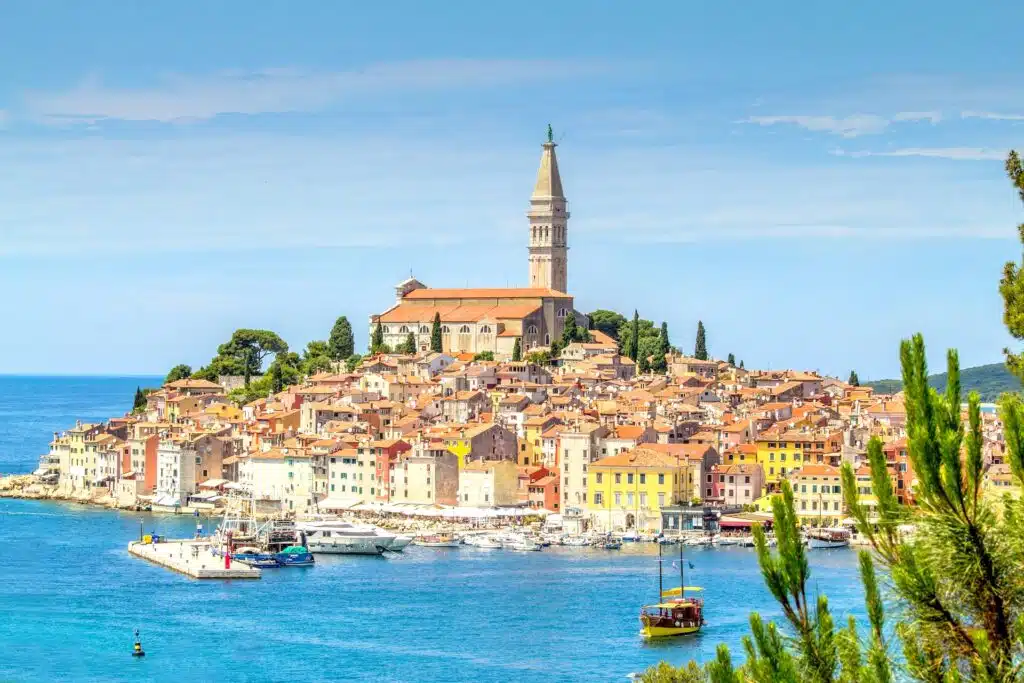
©autentica.si
Top things to do and to see
Explore Rovinj
One of the most ‘photogenic’ towns in Croatia, besides Primošten, is worth a visit. That’s why it is undoubtedly the most promoted spot on the Croatian coast besides Dubrovnik and the island of Hvar. Once there, you can admire its Venetian architecture and a scenic St Euphemia’s Church and discover its magnificent restaurants, beaches, and cute little islets surrounding it.
Note: Click here to find some suitable accommodations for you.
Motovun village
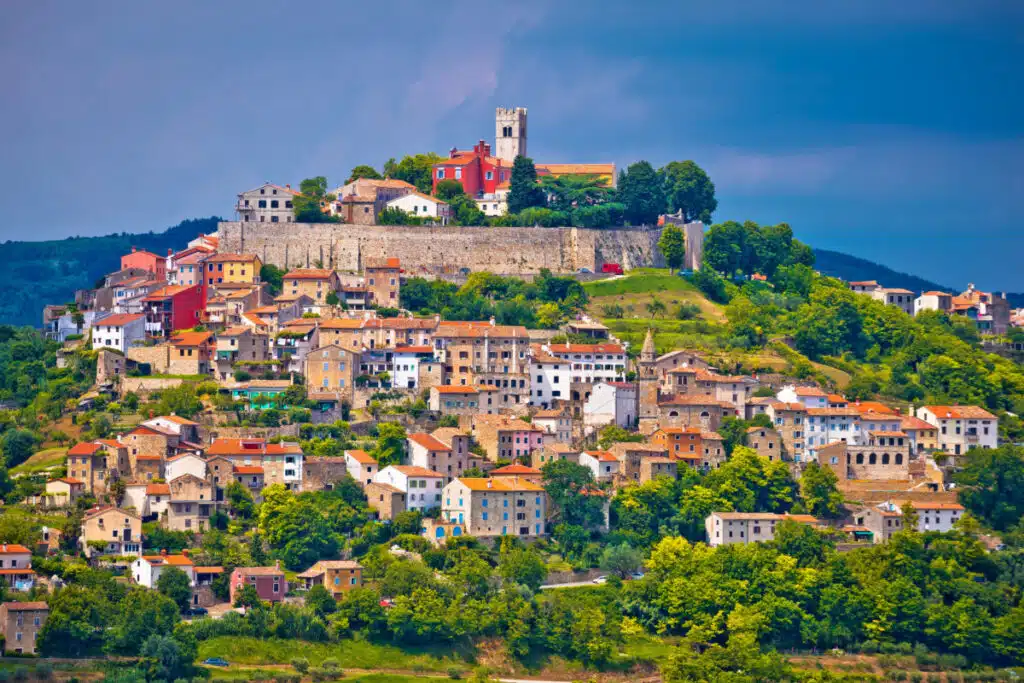
©vandraj.si
Discover its inland villages.
Inland Istria is sometimes called “Little Tuscany.” Thanks to its exciting history, olive groves, and vineyards, it boasts hilly scenery, agriculture, and Italian vibes. Additionally, Istria has held the “Best Olive Region in the World” title more than once, rivaling its Italian neighbors!
Several inland villages in Istria are worth visiting, the most popular being the medieval hilltop town of Motovun. To get there, you can pass through two other charming villages: Grožnjan and Oprtalj. Grožnjan is a small, quaint place known for its artistic colony and incredible views of surrounding valleys and the seaside.
Tip: try to explore the peninsula on Byke.
Note: Find suitable accommodations in or around Motovun.
Fuži with black truffles – the local delicacy.
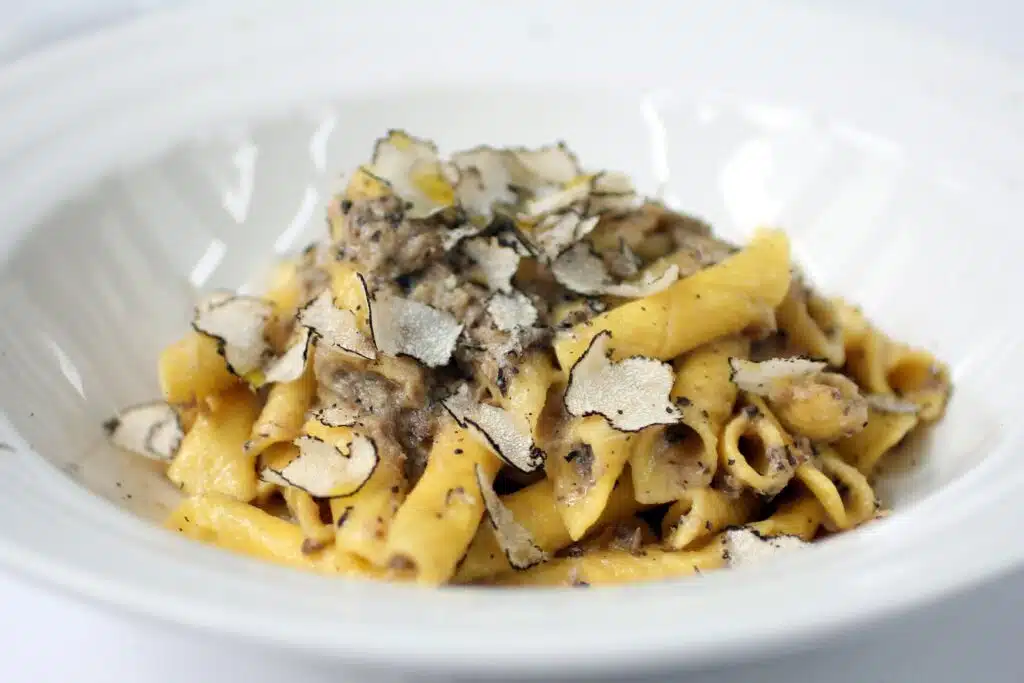
Tasty Istria
Gastronomy is a way of life in Istria. Its traditions, fresh, seasonal ingredients, and creative chefs combine to make this small peninsula the top spot for foodies. The region is famed for producing some of Croatia’s best delicacies, such as Istrian prosciutto, wine, olive oil, and Truffles. The celebrated use of truffles to season steaks or add to chocolate cake is only one example of the sophisticated dishes.
Tip: Try Istrian fuži (Istrian pasta variety) with black truffles.
Roman Arena in Pula
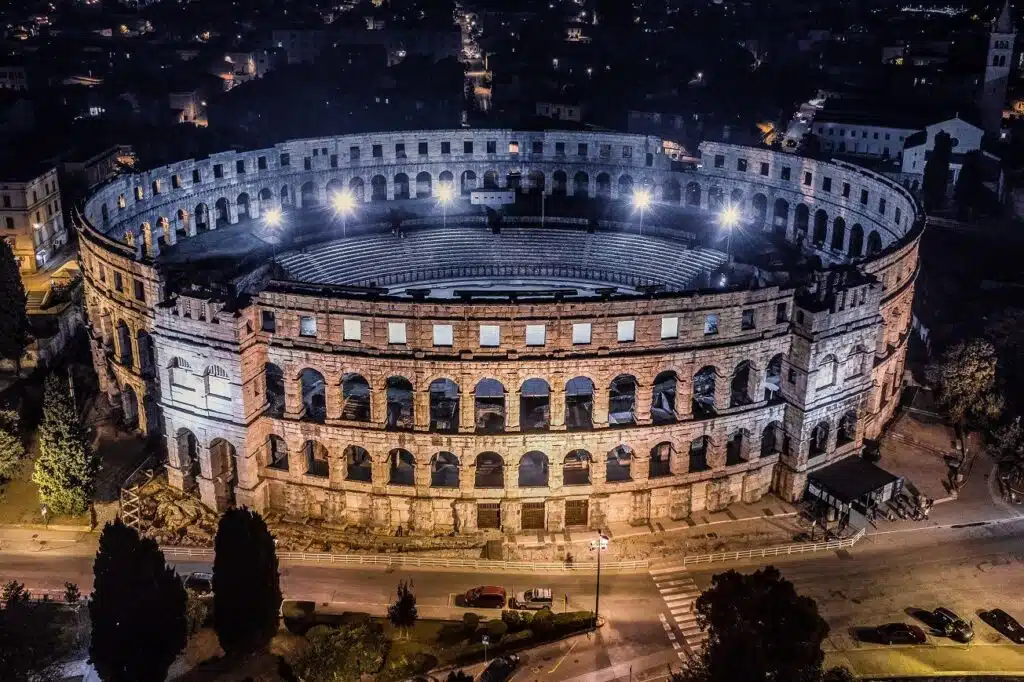
©pulainfo.hr
Appreciate the Pula’s Arena.
Of course, who would want to attend Istria’s number 1 attraction? Pula’s most famous and imposing sight is this 1st-century Roman amphitheater overlooking the harbor northeast of the old town. It’s a vast and truly magnificent structure, slotted together entirely from local limestone and known locally as the Arena. Designed to host gladiatorial contests and seating up to 20,000 spectators, it still serves the mass entertainment needs of the local populace in the shape of concerts and film festival screenings.
Note: Here, you will find the best accommodations in the area.
Brijuni
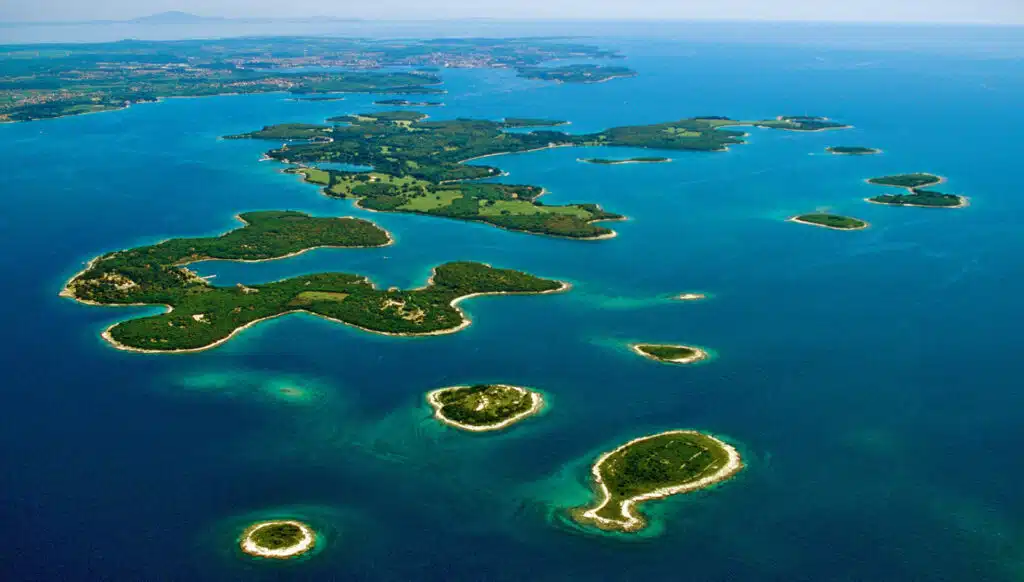
©np-brijuni.hr
Discover its beaches, islets, and, above all, its natural attractions
With its clear blue sea and refreshing greenery, Istria is a dream come true for all nature enthusiasts. So, discover its hidden untouched coves and lovely islands, climb its mountains, hike through its forests, and admire the extraordinary forces of nature so wonderfully on display on Croatia’s largest peninsula.
The top attractions are Brijuni National Park, Učka Nature Park, Motovun Forest, Lim Channel, and Istrian caves.
Hint: The best beaches, in our opinion, are on the eastern coast (Rabac, Lovran, Opatija). That’s where the sea is the cleanest too.
Euphrasian Basilica
The top spot in Poreč is the 6th-century Euphrasian Basilica, a World Heritage Site and one of Europe’s finest examples of late Roman art. The well-preserved 6th-century mosaics in the apse of the church are the highlights. So, be sure to visit it.
Opatija
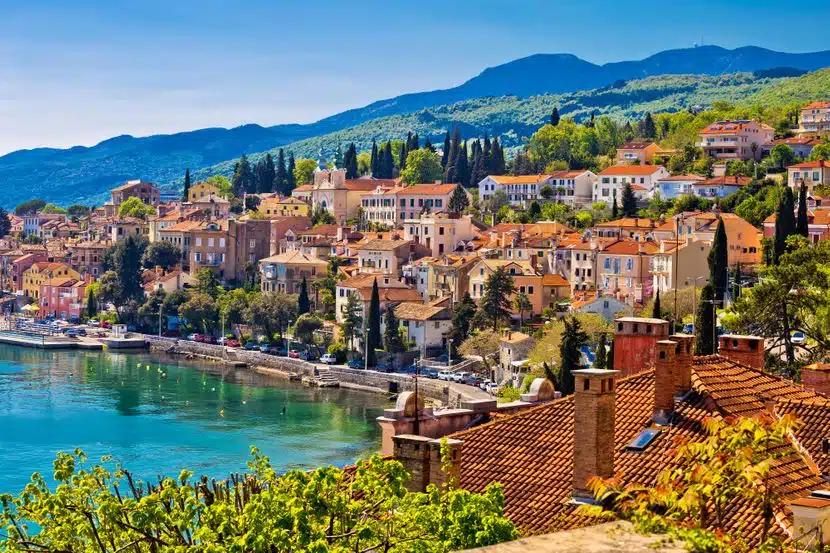
©ona.telegraf.rs
Explore the eastern Istrian coast.
Where the green hills meet the sea and nature, you will find the Istrian Easter coast. Indeed, nature is the greenest there, and the seawater is the clearest. First, we recommend you visit Opatija’s luxurious Riviera. It is namely different from other Istrian villages and resorts. And with its fla, it resembles more French or Italian rivieras. So, rent a bike and go cycling on 30 km long paths along its shores. Further along, you can visit Rabac, the quiet coastal resort with many little coves, or villages like Moščenica and Labin, with their authentic vibes and superb food and views.
Moščenice village
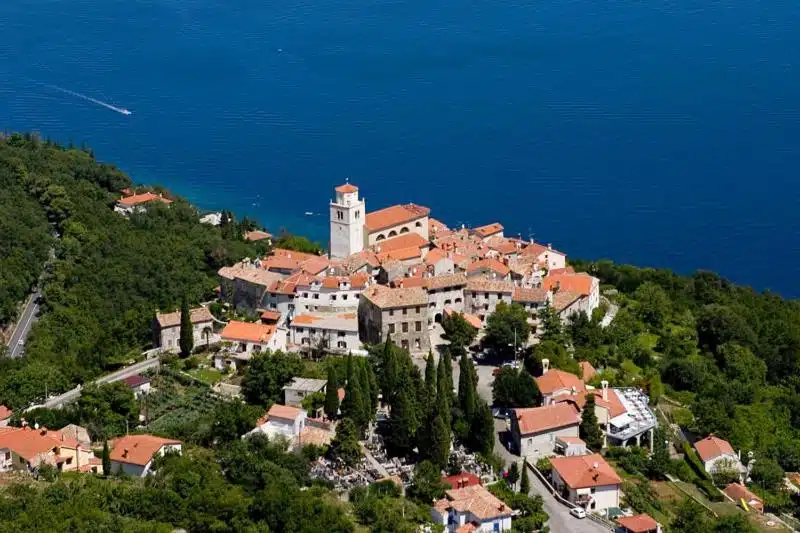
©booking.com
Our website includes affiliate links. So, remember that we may receive commissions when you click our links and make purchases. Please read our legal disclaimer document for more information about our Affiliate disclaimer and other disclaimers like the Fair-Use disclaimer.
One day trips
Suppose you stay there for extended periods and think you’ve seen it all (which we doubt). In that case, you can even discover neighboring regions and countries. The city of Rijeka and the islands of Krk and Cres are all nearby, waiting for you to find them. But it would be best if you still satisfied your wandering appetite. In that case, you can even peek at neighboring Slovenian Istria with its equally charming villages and coastal towns – Piran being the frontrunner.
There is a good ferry connection with Venice. So, all it takes is an hour or two long ride, and you can visit one of the world’s seven wonders. And lastly, the under-the-radar city of Trieste in Italy is only an hour’s drive away, despite needing to cross two national borders. It is there that Italian delicacies meet Austrian glam. That’s why we highly recommend visiting it.
When to visit
The best times to visit Istria are undoubtedly spring and autumn: it’s warm during the day, cool in the evening, and the madding crowds of summer are absent. It’s sunny almost all year round, and even the winter sun brings warmth.
How to Get to Istria
There are many ways to reach Istria. You can get to the islands by car, air, bus, train, and even ferry if you begin your journey in Italy.
By car
Istira’s excellent geographical location makes it easy to reach by car from neighboring countries like Slovenia, Italy, etc. So, if you live in central Europe, Italy, or the Balkans, you should consider driving to Istria.
By plane
The only airport in Istria is Pula. In contrast, the other close airports are Friuli Venezia Giulia Airport in Trieste, Marco Polo Airport in Venice, Treviso Airport in Italy, Jože Pučnik Airport in Ljubljana, Slovenia (also known as Brnik Airport or Fraport Slovenia), Zagreb Franjo Tuđman Airport, and Rijeka Airport in Croatia. So, if there aren’t any valuable deals with Pula Airport, you should consider the airports mentioned above since the distances aren’t so large.
We use Sky Scanner to find valuable deals.
By bus
If you come from a neighboring country, the bus may be a good option for getting to Istria. Since northern and western Croatia is well-connected with north Italy, you can get to Istria by bus from Trieste to Buje, Poreč, Rovinj, Pula, and other places on the way. The bus from Trieste to the western part of Istria, as well as to Rijeka, operates throughout the year.
We use Omio to find valuable deals.
By ferry
Since Croatia has a sea border with Italy, one way to get to Istria from Italy is by ferry. Two ferry providers from Italy to Istria are Adriatic Lines and Venezia Lines.
Adriatic Lines operates from Venice to the Istrian cities of Pula, Rovinj, Poreč, and Umag. Catamaran lines from Port San Basilio in Venice to Istrian cities last about two and a half hours.
We use Ferry Scanner to find valuable deals.
By train
If you come to Istria by train, you can arrive quickly using Ljubljana or Zagreb lines.
The line from Ljubljana can take you to Buzet or Pula every day, and it takes four hours. No more trains are going from Italy to Croatia.
If traveling from the Croatian capital, there are no direct train lines to Istria. However, you can take the train to Rijeka but then travel by bus from Rijeka. You can book the train tickets on the Croatian Railways webpage.
We use Omio to find valuable deals.
How To Get Around Istria
Buses and taxis are easy ways to get around Istria. Several bus lines connect numerous destinations throughout the country. Buses are comfortable and cost-effective if you wish to travel 10 or 500 km. Rijeka is the central transport hub if you travel from elsewhere in Croatia, with regular services linking to Istria from Zagreb, Split, and Dubrovnik.
Pula is a well-connected city. If your holiday base is in Pula, the bus station is within a short walk of the Roman Arena. However, renting a car is advisable if you plan to stay in other Istrian locations.
Where to stay
Istria offers many apartments, hotels, rooms, camping sites, etc. So, finding a suitable accommodation for you should be fine. For instance, the standard is higher than in other Croatian regions and Italy. So your satisfaction is guaranteed. So, now the only thing to do is to choose your destination.
We usually use Booking.com to find the best deals. It would be best if you tried it too.
Final words of Visit Istria article
Istria is the most developed tourist region on the Croatian coast. Its terrific location makes it convenient, and it has something for everyone. Therefore, you should visit it.
Take a look at

A Quick Slovenia Travel Guide 4U
A Quick Slovenia Travel Guide 4U will introduce you to this stunning under-the-radar European country. Firstly, we will discover its
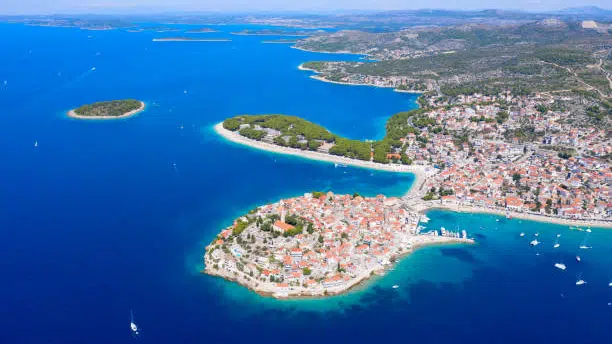
Primosten – The cutest little town
Primosten—the cutest little town on the Adriatic coast—is undoubtedly one of Croatia’s top hidden gems waiting to be discovered. Its
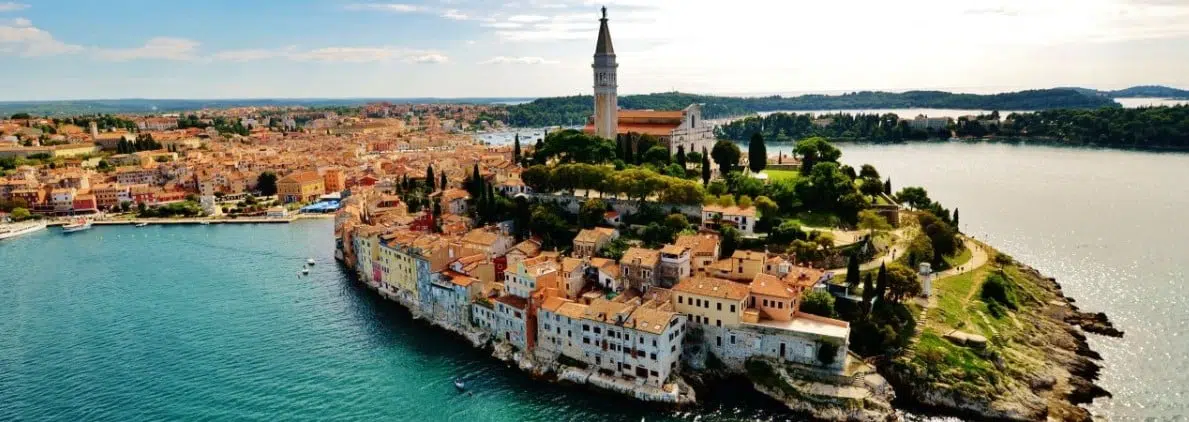
Ultimate travel guide to Rovinj
In this Ultimate travel guide to charming Rovinj, we will introduce this magnificent little town in the peninsula of Istria
References and sources:
Photo credits:
Feature photo credits: ©pulainfo.hr
